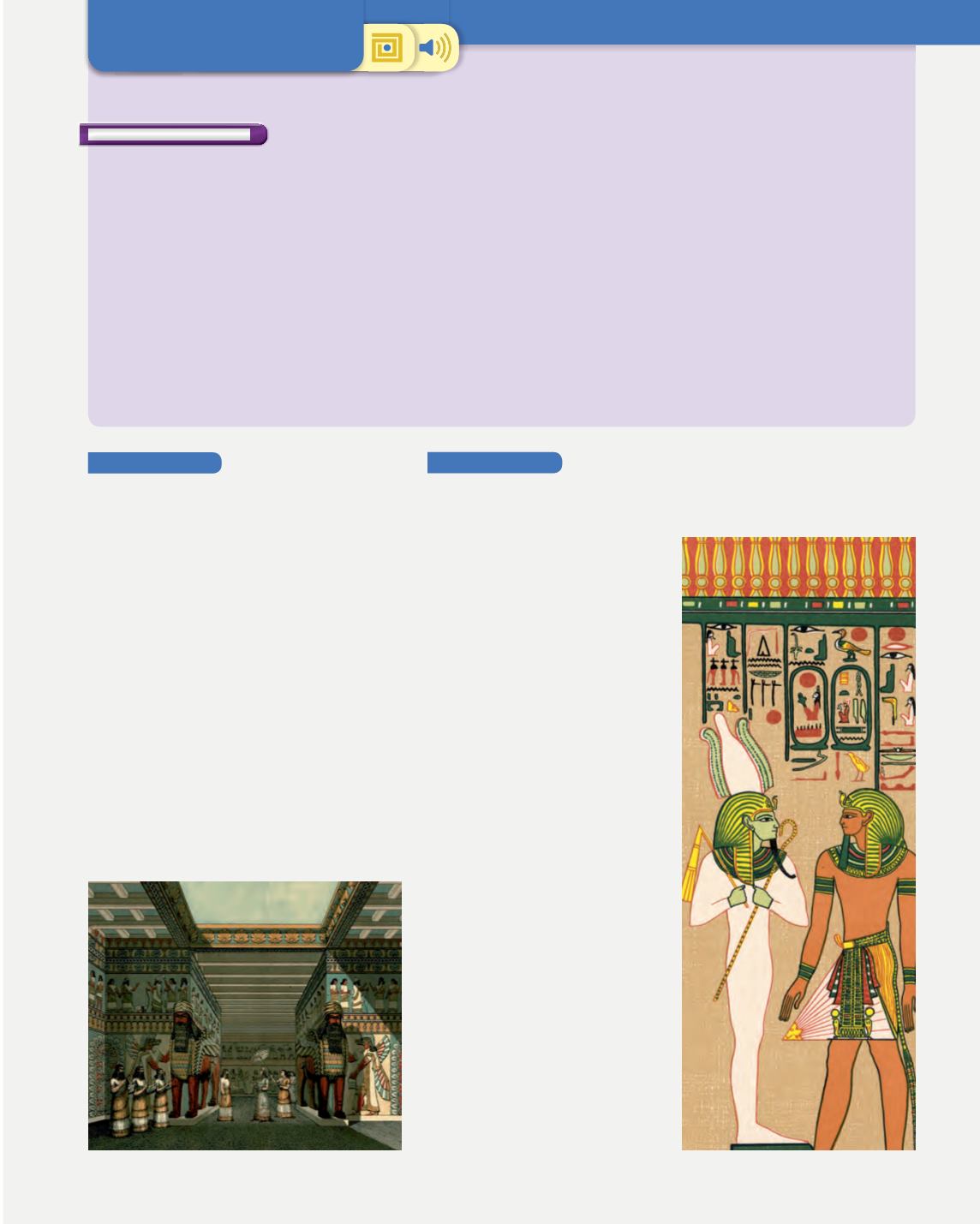
12
The first civilisations
3. The first civilisations
63
❚
Around 3500 B.C., some of the settlements in the large river valleys (the Tigris, Euphrates, Nile, Indo and Yellow River)
learned to make use of the water from the flooded rivers by building
canals
and
dykes
.
❚
The
first civilisations
, also known as
fluvial civilisations
, appeared as a result of an increase in agricultural production
and in trade.
❚
The first civilisations created a political organisation led by
governors
and
government officials
, who controlled their
territory and its inhabitants.
❚
Writing
was invented to accurately record economic data and agreements. The earliest writing system, known as
cuneiform
, was invented in
Mesopotamia
. The invention of writing marked the end of Prehistory and the beginning
of Ancient History.
❚
The first civilisations formed
social groups
. Society was divided into the
ruling class
(kings, priests and high government
officials), the
rest of the people
(farmers, merchants and craftsmen) and
slaves
.
❚
The most important code of laws from this period is attributed to
Hammurabi
, the king of Babylon.
Mesopotamia
❚
The first civilisation in history was born in
Mesopotamia, the region situated between
the rivers
Tigris and Euphrates
.
❚
This civilisation is divided into various periods.
During the first period, the
Sumerian
period, independent city states were formed
and governed by a king. The Sumerians were
followed by the
Akkadians
,
Babylonians
,
Assyrians
and the
Babylonians
once more.
The area then became part of the Persian
Empire.
❚
Mesopotamian religion was
polytheistic
.
❚
Mesopotamian architecture is characterised
by the use of
bricks
, tiles, semicircular arches
and vaults. They built terraced constructions,
called
ziggurats
. In sculpture, they made
reliefs
in walls and
steles
and
freestanding
sculptures
.
Ancient Egypt
❚
The Egyptian civilisation developed around the river
Nile
, which was its
main economic resource and means of transport.
❚
The history of Ancient Egypt
covers three thousand years,
until it became part of Rome in
the 1st century B.C. There were
four periods: the
Old Kingdom
,
the
Middle Kingdom
, the
New
Kingdom
and the
Late Period
.
❚
The Egyptians used
hieroglyphic
script
.
❚
The religion was
polytheistic
.
The most important gods were
Amun-Ra, Osiris, Isis and Horus.
The Egyptians believed in
immortality, which is why they
tried to preserve their corpses by
mummifying them.
❚
Egyptian
architecture
is
characterised by the use of stone
and the massive constructions.
The main buildings were temples
and tombs (mastabas, pyramids
and hypogea).
❚
Sculpture
is characterised by the
use of an unnatural style to reflect
the solemnity of the figure.
❚
Painting
was used to decorate
palaces, temples and tombs. They
used flat colours and the
canon
of profile
.
KEY CONCEPTS


